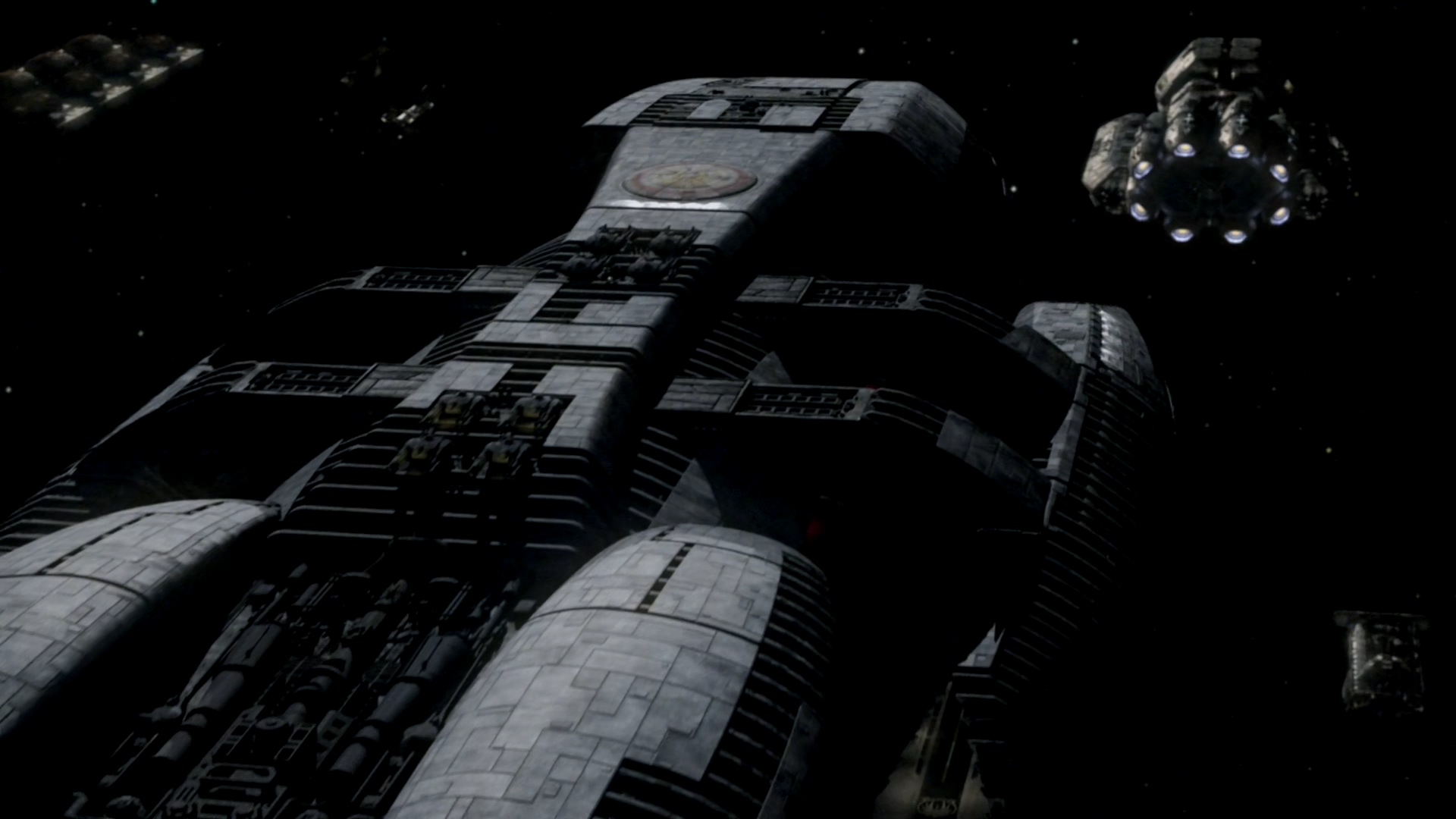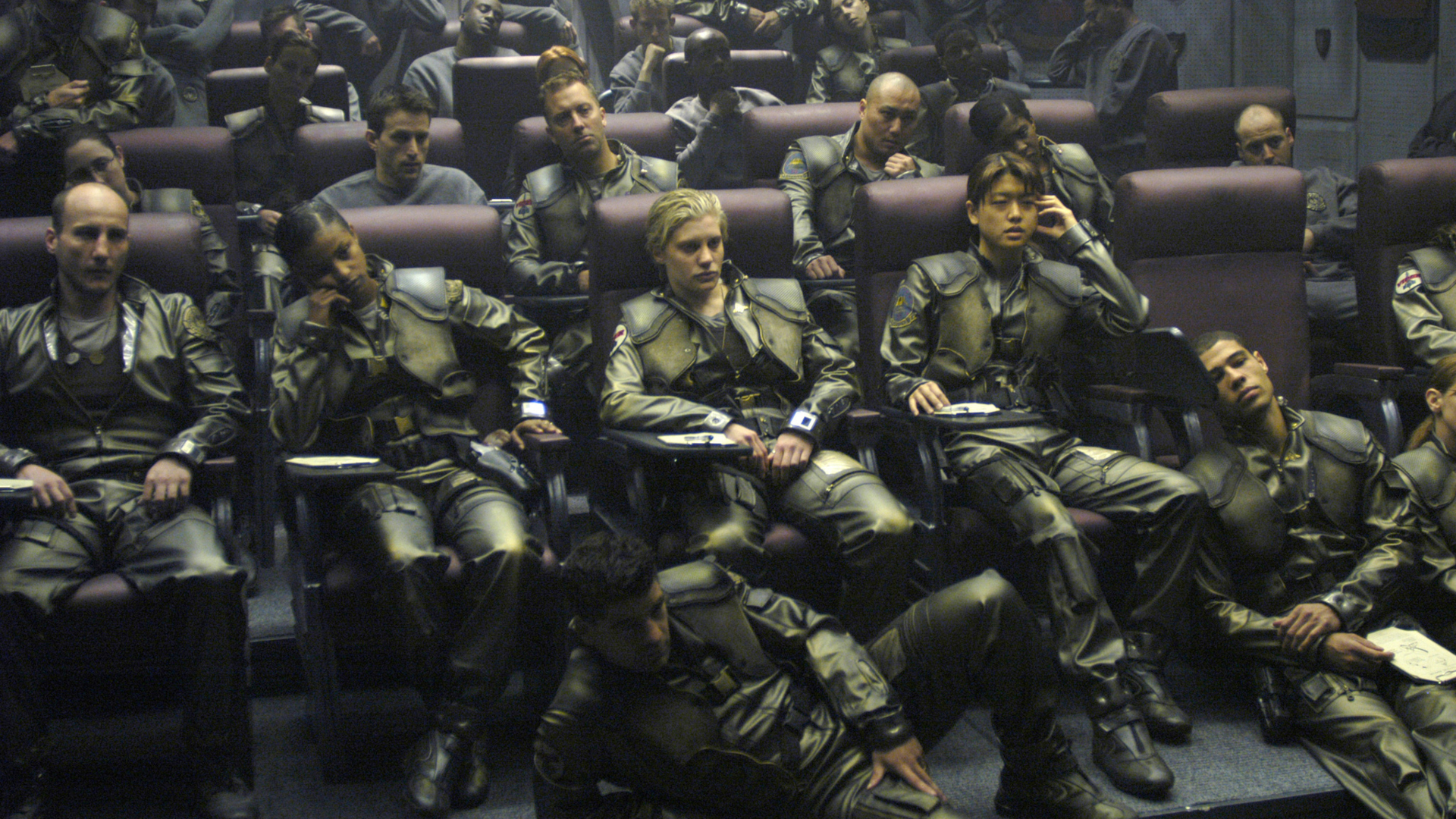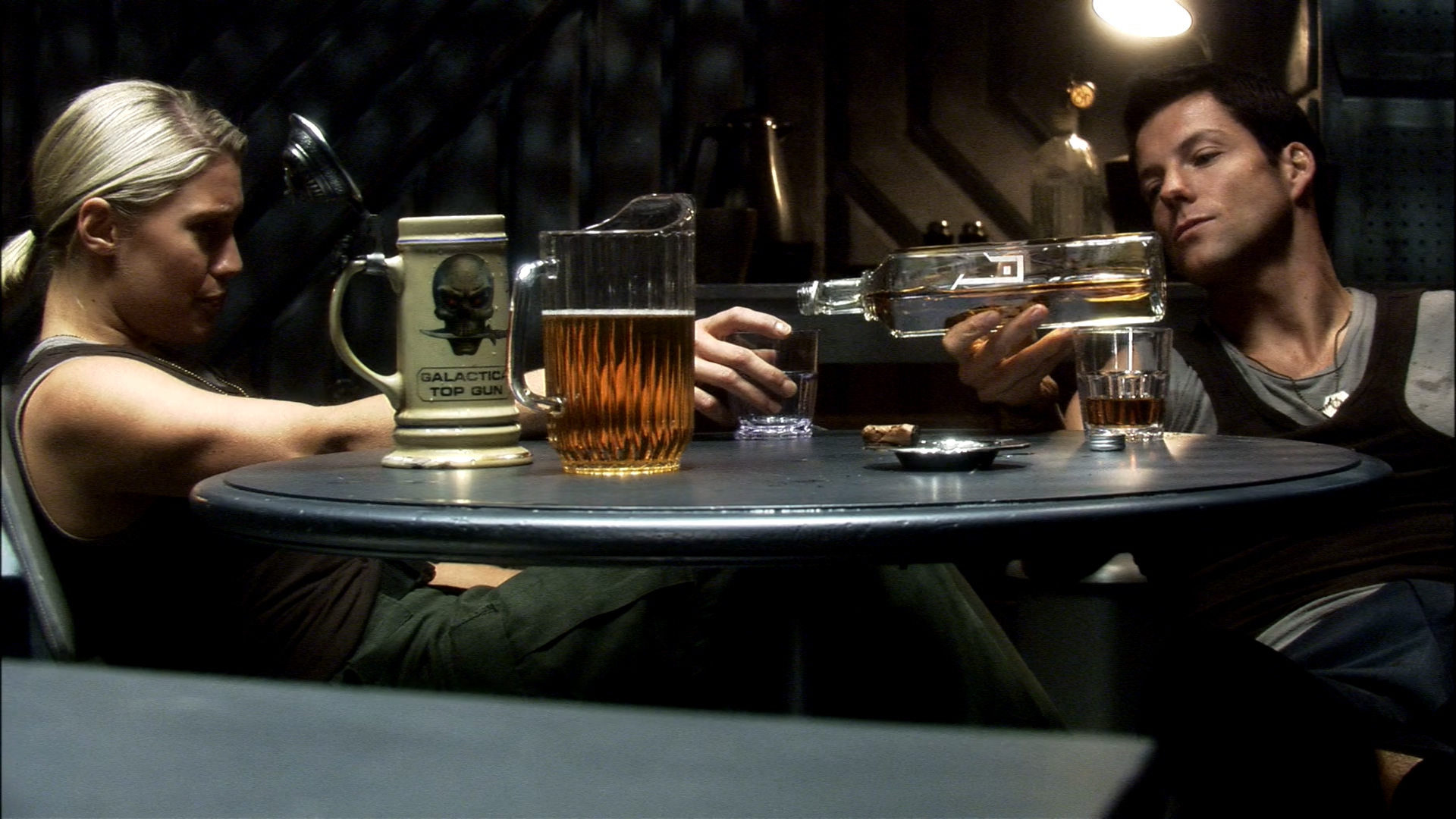If you wanted to assemble a time capsule of late 1970s pop culture, the original “Battlestar Galactica” would be a good place to start. Not only was it an unashamed attempt to cash in on the record-breaking success of “Star Wars” — to the extent that George Lucas’s lawyers wrote some very angry letters — the disco stylings of Glen A. Larson’s big-budget TV space opera tie it to a very specific time in history.
The show’s wholesome family values, robot dogs, and kitschy, “Saturday Night Fever”-esque fashions always jarred with the bleak premise at its heart, as the last remnants of humanity went on the run from a race of angry robots known as Cylons. But even though the expensive, effects-heavy show was dropped after a single season — and the less said about forgettable Earth-based spin-off “Galactica 1980” the better — it always felt like a concept worthy of further exploration.
Even so, few would have predicted that reimaginers-in-chief Ronald D Moore and David Eick could turn “BSG” 2.0 into one of the most ground-breaking and most critically adored TV series of the 21st century — one that said even more about the early ’00s than its predecessor had about the ’70s.

Much as it is now, turn-of-the-millennium space opera was dominated by two other veteran franchises with “star” in the title. In the “Wars” corner, George Lucas’s prequel trilogy was earning big bucks at the box office, yet struggling to impress either critics or an older generation of fans pining for Han Solo. “Trek”, meanwhile, was limping towards the end of 18 continuous years on TV, with “Enterprise” its sole remaining representative on the final frontier.
The rebooted “Battlestar Galactica” had little in common with either. Sure, the mini-series (essentially an extended pilot) that debuted in late 2003 featured spaceships-a-plenty, artificial lifeforms, and narratively convenient technologies to facilitate faster-than-light travel. But in most other regards this was less “galaxy far, far away” than planet Earth relocated to outer space, warts and all.
The residents of the 12 Colonies of Kobol dressed like us, squabbled like us, and — aside from using “frak” in place of a more R-rated F-word — mostly talked like us too. Traveling through the cosmos was hard work, Viper spacecraft fired bullets rather than lasers, and even the show’s hot-shot fighter pilots were relatably, sometimes spectacularly, flawed.

Meanwhile, “Battlestar Galactica”‘s famous robot antagonists, the Cylons, had been given an upgrade to look like humans, while Baltar (aka the guy who sold out humanity to the machines) was less a mustache-twirling traitor than an unwitting pawn. One man’s vanity and inability to realize that his beautiful girlfriend was playing him ultimately caused the downfall of an entire civilization.
Had Sci Fi (as Syfy was known at the time) called it a day after the mini-series, the reboot would have been fondly (if modestly) remembered — not least for a final frame reveal in which pilot Sharon “Boomer” Valerii turned out to be an unwitting Cylon sleeper agent. But it was with “33”, the first episode proper (which debuted in the US on January 14, 2005), that “BSG” set out its stall as a show for the ages.
The contrast with the original series’ opening episodes couldn’t have been starker. When Lorne Greene, Richard Hatch, Dirk Benedict, and the rest of their ragtag fugitive fleet fled the Cylon tyranny, one of their first ports of call was the pleasure planet of Carillon for a spot of R&R. There was no such respite in “33”, however, as the Cylons tracked down the Colonials, like clockwork, every 33 minutes for days on end. With the crew running on fumes, it was an intense, bruising hour of TV, in which characters made mistakes, and decisions that could cost the lives of thousands were taken in seconds.

It still ranks among the greatest episodes of sci-fi TV in history, and marked the start of two-and-a-bit imperious (leader?) seasons of best-in-class viewing. And even though the show would later lose some momentum — taking misguided turns into more spiritual territory along the way — its reputation had already been long assured. Not even a divisive ending that borrowed a surprising amount from “The Hitchhiker’s Guide to the Galaxy” could alter that.
Much of what made “Battlestar Galactica” great was a pushback against “Star Trek”. Moore had been one of the mainstays of the “Next Generation” and “Deep Space Nine” writers’ rooms, but had become increasingly frustrated at long-standing edicts (still largely in place after “Trek” creator Gene Roddenberry’s death in 1991) that Starfleet vessels should be conflict-free and an HR manager’s dream come true.
There were no such restrictions in “BSG”, where self-interested humans frequently posed as much threat to each other as the Cylons on their tail. And in a real world still coming to terms with 9/11 and George W Bush’s subsequent “War on Terror”, “Battlestar Galactica” dared to ask difficult questions that most Earthbound dramas were still leaving well alone. Who can you trust if anyone on your ship could be the enemy? Is torture ever acceptable? And what if the suicide bombers are the nominal “good” guys? “BSG” may have been set light years from Earth, but it still tackled weighty themes with nuance and plenty of moral shades of grey.

As well as reflecting the complex political landscape of the era, “Battlestar Galactica” was at the forefront of an explosion of quality serialized TV, frequently mentioned in the same breath as feted contemporaries such as “The Sopranos” and “The Wire”. The difference, of course, was that it hailed from a genre that had too often been dismissed as inferior. But, as Time magazine so memorably put it when “BSG” topped its list of the best TV shows of 2005: “Most of you probably think this entry has got to be a joke. The rest of you have actually watched the show.”
While “BSG” didn’t ultimately lead to a major renaissance of TV space opera (its ratings were rarely as big as the plaudits), it’s undoubtedly been a major influence on the Solar System-set “The Expanse“, and — in an intriguing feedback loop — the “Star Trek” shows that came later. Indeed, in their bleaker, swearier moments, there have been times when “Discovery” and “Picard” have both looked like they’re trying to live their best “BSG” lives.
And the possibility of yet another reboot remains, as Universal seems to have at least one potential “BSG” project in development most of the time. As the characters in the show are so fond of saying, “All this has happened before and will happen again”. The question is, can “BSG” 3.0 — if it ever comes to fruition — live up to the legacy of one of the best sci-fi TV shows of the 21st century?
“Battlestar Galactica” is available to stream on Prime Video in the US.
Article by:Source –
















